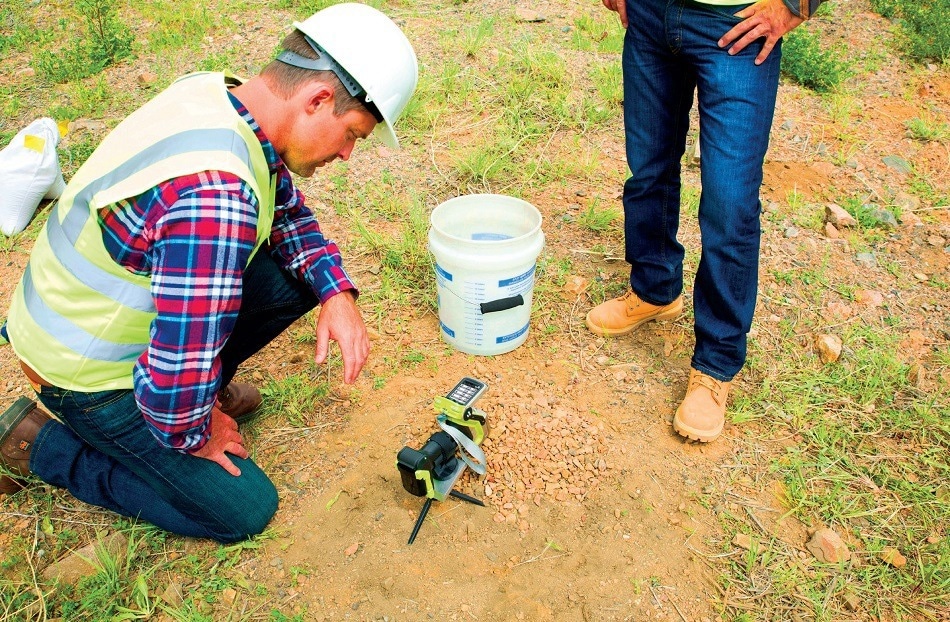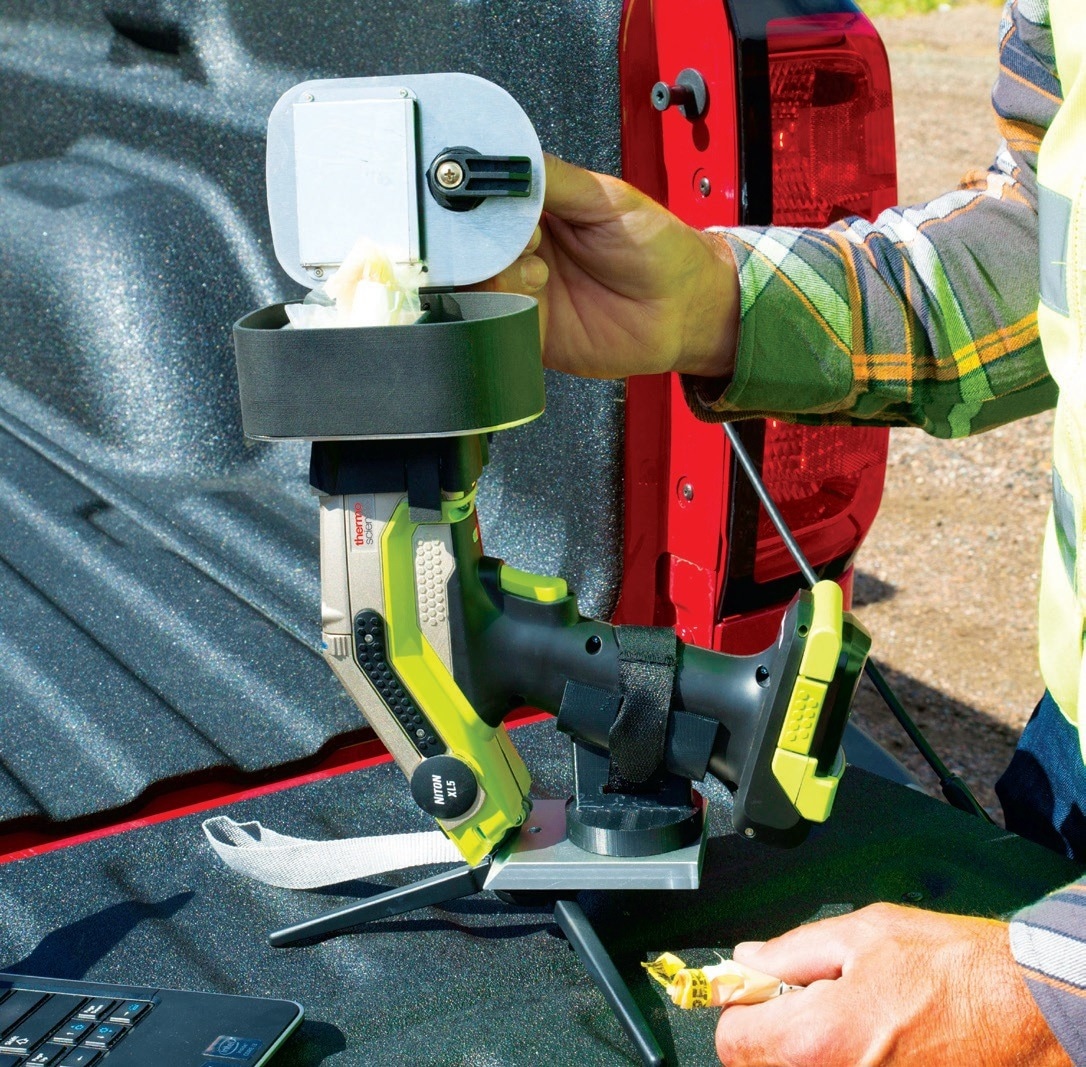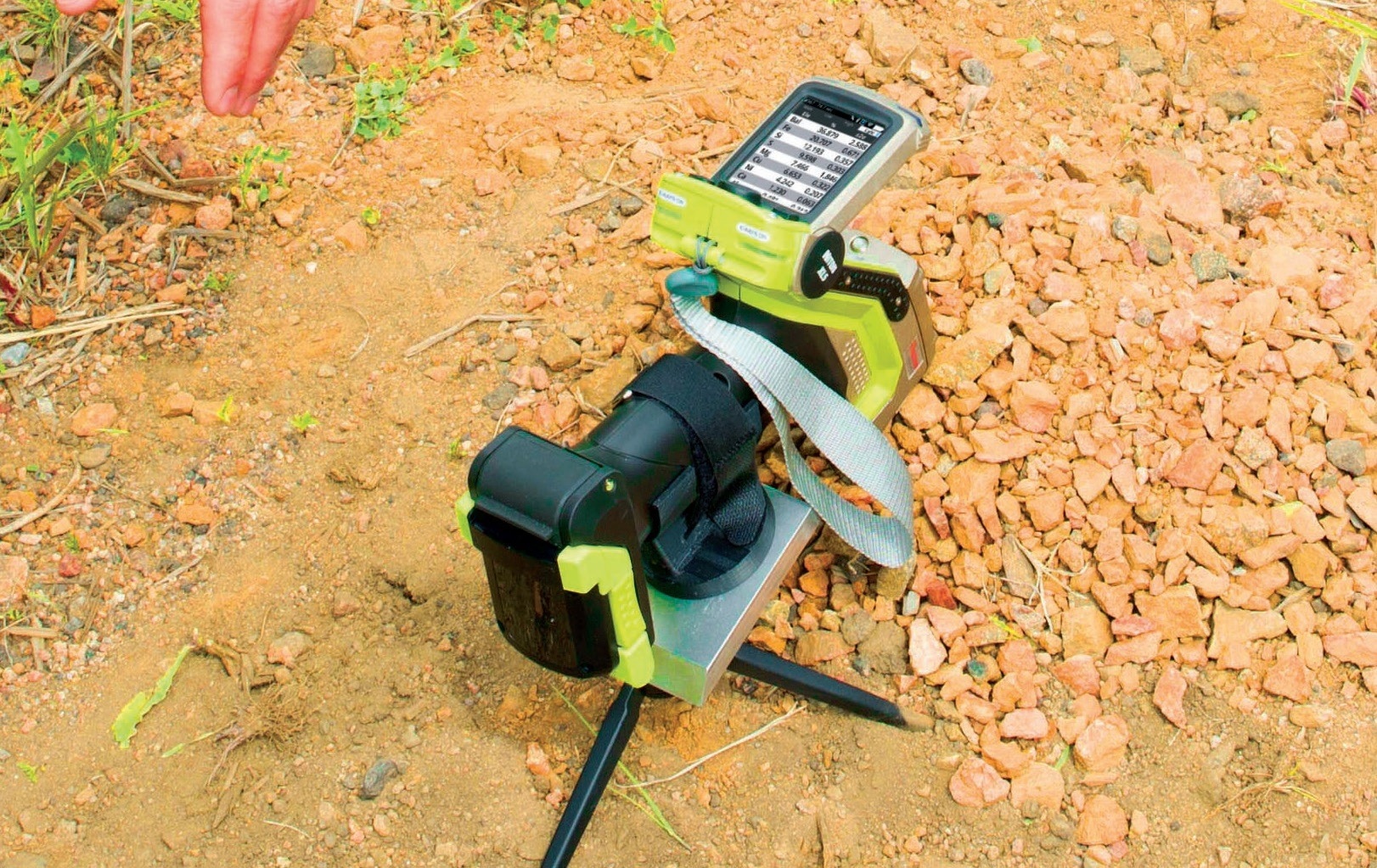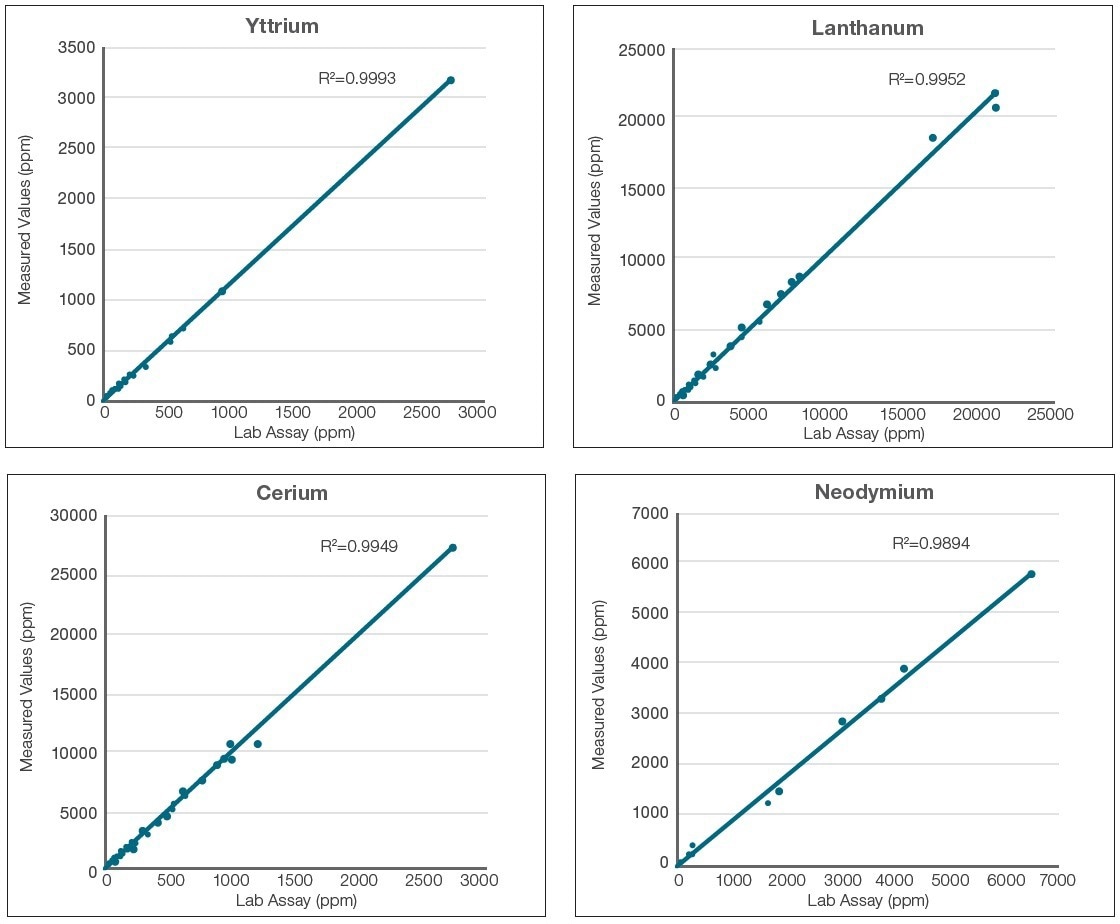According to the International Union of Pure and Applied Chemistry (IUPAC)1 nomenclature, rare earth elements (REEs) include scandium (Sc), yttrium (Y), and the lanthanide family of elements, or elements in the periodic table from lanthanum (La), atomic number 57, to lutetium (Lu), atomic number 71.

Image Credit: Thermo Fisher Scientific - Handheld Elemental & Radiation Detection
Permanent magnets, industrial and automotive catalysts, glass polishing powders, glass additives, metals and alloys, battery alloys, ceramics, pigments, and phosphors are just a few of the items that depend on rare earth elements for production.2
These materials are used in a variety of high-tech applications3, including lasers, superconductors, low-energy lighting, emission control, electronics, medical, and military.
Rare Earth Elements (RREs) are elements that naturally exist in the environment, with the exception of promethium (Pm). Cerium (Ce), yttrium (Y), and lanthanum (La) are elements that, despite their names, can be relatively abundant in the earth’s crust, with average concentrations of 66, 39, and 33 parts per million (ppm), respectively.
These values are comparable to or higher than those of copper (60 ppm) and lead (60 ppm) (14 ppm).4 In contrast to the normal amounts of gold (0.004 ppm) and silver (0.075 ppm),4 other REEs commonly exist between 0.5 and 10 ppm.
Despite being very abundant in the earth’s crust, REEs are seldom concentrated into quantities of mineable ore. In reality, REE ores are intricate in both mineralogy and chemistry.
As REEs are rich in several minerals and since each mineral has a unique and expensive extraction and processing technique,5 mining for REEs is difficult. Moreover, REE ores frequently contain thorium (Th), a radioactive element that generates radioactive waste and adds to the handling expense.
As a result, deposits of rare earth elements with high REE concentrations in a single mineral phase have a competitive advantage. To date, heavy-mineral placers (Monazite) and single-mineral phase deposits like Bayan Obo (bastnäsite) and Mountain Pass (bastnäsite) have accounted for the majority of REE output.5

Figure 1. Bastnäsite (left) and Monazite (right) minerals are the largest sources of Rare Earth Elements. Image Credit: Thermo Fisher Scientific - Handheld Elemental & Radiation Detection
China generated around 60% of the supply of REE in 2020. India, Australia, and Myanmar generated the remaining amounts.6
For firms that are involved in REE exploration and mining around the globe, the precision of geochemical analysis is essential to determine the feasibility of deposits and, consequently, to identify REE-rich regions for extraction.
The field-based geochemical analysis of primary elements and REEs is now possible with the Thermo Scientific™ Niton™ XL5 Plus portable XRF analyzer.
Niton XL5 Plus Handheld XRF Analyzer
The Niton XL5 Plus analyzer is the smallest, lightest, and most potent handheld XRF analyzer on the market; it is simple to transport and can be used in even the most remote locations.
Compact measuring geometry, a reliable 5W X-ray tube running up to 50 kV at 100 µA and down to 6 kV at 500 µA, and the most recent silicon drift detector technology with a wide area and graphene window are all features of the Niton XL5 Plus analyzer.
For the most demanding applications, such as measuring rare earth elements, these integrated features offer excellent performance and unmatched heavy and light element sensitivity.

Figure 2. The Niton XL5 Plus analyzer standalone instrument (above). Instrument in a Mini Test Stand for sample cups and sample bags analysis (top right) and in reverse combination for direct soil analysis (bottom right). Image Credit: Thermo Fisher Scientific - Handheld Elemental & Radiation Detection
The Niton XL5 Plus Rare Earth Element Mode includes light REEs like lanthanum (La), cerium (Ce), praseodymium (Pr), and neodymium (Nd), as well as an elemental range from magnesium to uranium.

Image Credit: Thermo Fisher Scientific - Handheld Elemental & Radiation Detection
Chemically, yttrium (Y) and scandium (Sc) are comparable. Since these substances frequently coexist with heavy REEs in ore deposits, it is possible to extrapolate concentrations of heavier REEs from observed yttrium and scandium values.

Image Credit: Thermo Fisher Scientific - Handheld Elemental & Radiation Detection
The Niton XL5 Plus analyzer can be instantly connected to an external professional GPS or the internal GPS to map the measured element concentration. The Niton XL5 Plus analyzer has an IP54 rating, making it splash and dust resistant as well as suitable for the harsh conditions seen in exploration fields and mines.
Method
The materials were previously crushed to a typical particle size of less than 250 µm and added to sample containers lined with 4 µm polypropylene film. The samples were acquired from various Canadian mining firms. After that, the sample cups were put on a test stand.
Then, the Niton XL5 Plus Rare Earth Element Mode was used for 180 seconds to carry out the analysis, employing four distinct main filters and voltages to measure REE and associated elements, including magnesium and uranium.
Results
Figure 3 compares the analytical outcomes for the group of samples. Results were achieved using two methods:
- Round robins employing various methodologies;
- Single lab analysis utilizing ICP-OES and ICP-MS after manufacturing fused beads of the mineral samples and dissolving those in diluted acids.
Figure 3’s results for yttrium, lanthanum, and cerium indicate strong correlations between the lab tests and observed levels The instrument’s accuracy can be further increased by using type standardization, and its accuracy “out-of-the-box” is also sufficient.

Figure 3. Exemplified lab values vs. measured values using the Niton XL5 Plus analyzer “out of the box” for the determination of REEs. Image Credit: Thermo Fisher Scientific - Handheld Elemental & Radiation Detection
Conclusion
Instant high-quality geochemical data and a quick return on investment are made possible by the Niton XL5 Plus analyzer’s powerful performance and unmatched technology. Geologists and miners can target elements in complicated minerals with previously unheard-of sensitivity, thanks to the new Niton XL5 Plus Rare Earth Element mode.
The Niton XL5 Plus analyzer, which locates anomalies and identifies drilling sites, is a crucial tool for accelerating REE exploration while lowering lab analysis expenses significantly. To direct REE extraction, identify high-grade enrichments, and determine the feasibility of low-grade ores during the mining process, the Niton XL5 Plus analyzer is an essential instrument.
References
- Connelly, N. G., et al. (2005). Nomenclature of Inorganic Chemistry IUPAC Recommendations 2005. RSC Publishing. https://old.iupac.org/publications/books/rbook/Red_Book_2005.pdf
- Rare Earth Elements Facts. Natural Resources Canada. https://natural-resources.canada.ca/minerals-mining/mining-data-statistics-analysis/minerals-metals-facts/rare-earth-elements-facts
- Van Gosen, B. S., et al. (2014) The rare-earth elements: Vital to modern technologies and lifestyles. U.S. Geological Survey. doi:10.3133/fs20143078
- . D. Lide Editor, CRC Handbook of Chemistry and Physics, CRC Press. 2016-2017
- Somarin, A. (2012) Exploration and Mining of Rare Earth Elements (REE) Using Tube-Based Thermo Scientifc Portable XRF Analyzers. Thermo Scientific. https://tools.thermofisher.com/content/sfs/brochures/RareEarthREE.pdf
- Gambogi, J. (2021) Mineral commodity summaries. U.S. Geological Survey. doi:10.3133/mcs2021

This information has been sourced, reviewed and adapted from materials provided by Thermo Fisher Scientific – Handheld Elemental & Radiation Detection.
For more information on this source, please visit Thermo Fisher Scientific – Handheld Elemental & Radiation Detection.